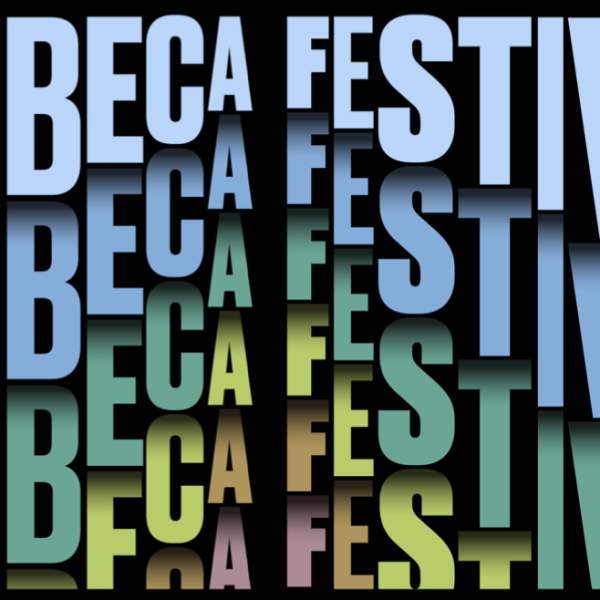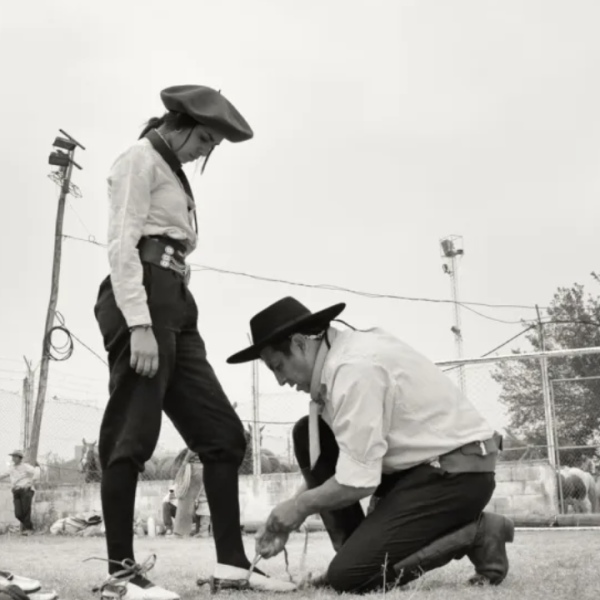Ethan Hawke’s “Wildcat” has an intriguing fixation with artistic process. The actor-turned-director casts his own daughter, Maya Hawke, as Southern Gothic author Flannery O’Connor, in another film about a real artist’s life — “Blaze” was about a country musician; “Seymour: An Introduction” followed a classical pianist — with an unconventional and alluring narrative structure. However, despite Maya Hawke throwing herself headfirst into the part, her father’s attempts to capture O’Connor’s mind, body, and soul end up feeling incomplete.
The opening scene takes the form of an old, black and white movie trailer in a 4:3 aspect ratio — appropriate for “Wildcat’s” 1950s setting — for a salacious thriller about a rebellious young woman (played by Maya Hawke) who scandalizes her conservative Catholic mother (Laura Linney). It exists entirely apart from the movie’s narrative, but it seems to inform Hawke’s directorial mission statement, as he aims to translate a tale of literary process, and spiritual contradiction, into cinematic language.
The film’s real opening scene (in 2.35:1 widescreen and cold, muted colors) takes the form of a handheld point-of-view shot, of an imagined criminal holding a character at gunpoint. It quickly becomes apparent that this is a figment of O’Connor’s creative imagination, as she goes back and forth on the criminal’s dialogue, and the scene repeats itself and extends past its organic endpoint. The gun goes off and, as if in reaction to her own creation, the real O’Connor’s head snaps forward, toward her typewriter, in frustrated disappointment. The very first time we see her — crooked teeth, awkward glares from behind thick spectacles, and a determined disposition punctuated by doubt — she can barely get a sentence out without questioning her creative impulses.
This is the baseline from which Hawke begins telling O’Connor’s story, one in which the gloomy, the obscene, and the macabre collide head first with her Catholicism, and her family’s expectations for a young Southern woman from polite society. Much of the plot unfolds in her hometown of Milledgeville, Georgia, where she’s diagnosed with Lupus — the same disease that claimed her father’s life — and where she most struggles with her identity and her politics, given the overt clash between her artistic instincts and the diametrically opposed veneer of her folksy local community.
Ethan Hawke’s dramatization of these conundrums is unconventional. They take the form not of conversations, but of fictitious cinematic vignettes: brief snippets of stories as imagined by O’Connor, and influenced by details and people she sees around her in the real world. She pictures herself and her mother in key roles in nearly every story — Maya Hawke and Linney appear in each of these tales — a flourish of repetitive casting that makes for distinctly cinematic depiction of literary self-projection. The way director Hawke shoots these scenes (with an untethered, floating camera, compared to the stillness with which he films reality), imbues them with a sense of unpredictability, as they barrel towards increasingly absurd revelations about each character, accompanied by O’Connor’s poetic voiceover.
At one point, “Wildcat” essentially becomes an adaptation of “Parker’s Back,” a short story by O’Connor in which lust and Christian belief collide in ways that feel familiar to the writer’s life. However, this reflection only goes so far, re-establishing the parameters of a spiritual dilemma that seldom takes new forms or presents new challenges as the film goes on. O’Connor’s romantic subplot, with her university professor Cal Lowell (Philip Ettinger), feels similarly stifled, appearing as a mere check-list item meant to sketch out the boundaries of her celibacy-until-marriage beliefs, but without playing a central role in the emotional agony toward which the movie frequently gestures.
This agony comes to a head in a deeply felt (and painfully embodied) scene of bedside confession, in which Maya Hawke’s full-throated performance as the conflicted author verges on moving. However, Ethan Hawke’s camera inadvertently lessens the impact of this and other scenes to which his daughter fully commits. His close-ups are edited, first and foremost, for their function, and their dialogue, rather than what they might reveal through silences, and when the question of mortality begins to loom over O’Connor, he introduces a flourish so beautifully conceived that it accidentally breaks the movie. About half-way through, he presents spaces familiar to the audience (and some unfamiliar ones, like cemeteries) but defines them through the physical absence of O’Connor, using empty spaces where a person ought to be.
It’s a moving example of the genuine thought he puts in as a director (and as a co-writer with Shelby Gaines) to how to wordlessly express the inexpressible specter of death. However, rather than following up on this emotionally effective thread, he chooses this moment, of all moments, to flash back and introduce a topsy-turvy narrative structure, portraying a time when O’Connor’s physical presence isn’t at odds with this emptiness, and he never fully returns to this cinematic dichotomy.
It’s a bold idea that feels wasted, and when O’Connor is finally able to approach some kind of spiritual reckoning, it’s one that takes neither direct nor oblique form — it’s presented neither in the literal dramatic terms of O’Connor’s linear narrative, nor in her imaginative purview — but rather, in the form of rote implication, as the film practically ends in medias res just as it starts to get interesting.
Given the formal flourishes found in this ending, it isn’t hard to trace its cinematic inspirations: the films of Paul Schrader, with whom Hawke collaborated on “First Reformed.” But where Schrader’s hints of climactic splendor are built on spiritual torment, Ethan Hawke’s depictions of the same never truly reach their emotional zenith. “Wildcat” is too tame in its portrayal of suffering to let its Catholic undertones sing or take powerful cinematic form, resulting in a work where paradoxes are half-baked dilemmas that seem too conveniently solved, and life itself is something that happens far off-screen.
Grade: C+
“Wildcat” screened at the 2023 Toronto International Film Festival. It is currently seeking U.S. distribution.






